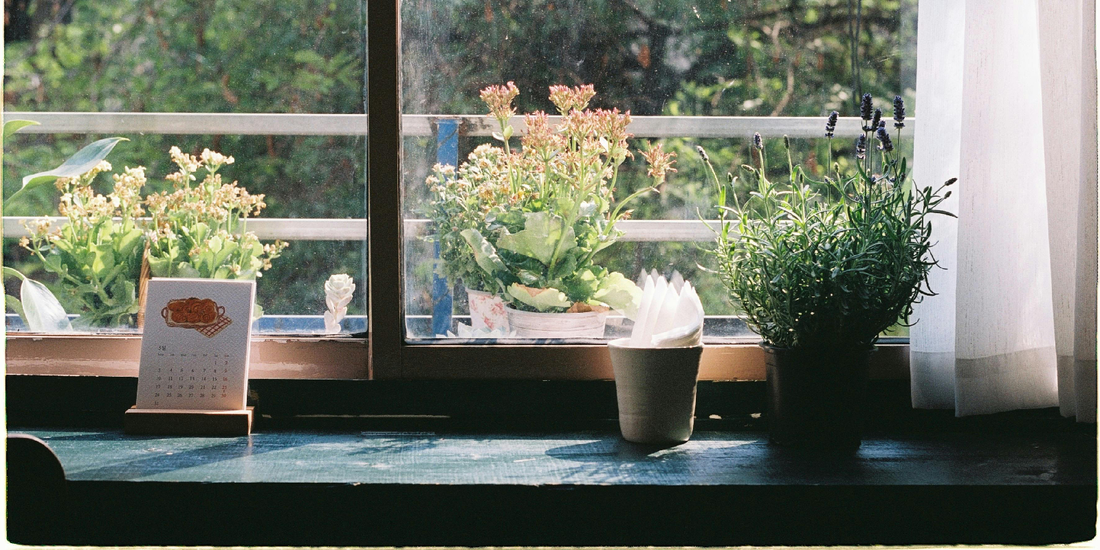
How to Grow Lavender Indoors in a Plant Stand
Share
Lavender is more than just a fragrant flower—it is a symbol of relaxation, elegance, and timeless charm. Traditionally grown outdoors in Mediterranean climates, lavender has gained popularity as a houseplant thanks to its soothing aroma and ability to elevate home décor. With the rise of modern plant furniture, such as the amoyls VerdantGlow S-Shaped 8-Tier Plant Shelf with Grow Lights, growing lavender indoors has become practical and stylish.
In this detailed guide, we will explore everything you need to know about cultivating lavender indoors, including lighting requirements, soil preparation, watering schedules, and styling tips for incorporating lavender into your interior design.
Why Grow Lavender Indoors?
Lavender is widely celebrated for its versatility:
- Aromatherapy Benefits: Lavender emits calming essential oils that help reduce stress, improve sleep, and enhance relaxation.
- Air Freshening: Unlike synthetic air fresheners, lavender naturally perfumes indoor spaces.
- Home Aesthetic: With its silvery-green foliage and purple blossoms, lavender adds a touch of Mediterranean charm to any modern living space.
- Year-Round Access: Growing lavender indoors means you don’t have to rely on outdoor weather conditions or seasons.
By placing lavender on a stylish plant stand like the VerdantGlow, you gain both function and beauty—combining vertical gardening efficiency with indoor elegance.
Choosing the Right Lavender Variety
Not all lavender varieties thrive indoors. When selecting, consider compact species that adapt well to containers and limited space:
- French Lavender (Lavandula dentata)
- Best suited for indoor growing.
- Produces distinctive toothed leaves and long-lasting blooms.
- English Lavender (Lavandula angustifolia)
- Classic fragrance and versatile usage.
- Needs plenty of light but adapts well to grow lights.
- Spanish Lavender (Lavandula stoechas)
- Recognized by its rabbit-ear petals.
- Adds ornamental charm, though slightly less fragrant.
Compact hybrids are generally recommended since they require less root space and respond well to container life.
Setting Up Your Indoor Plant Stand
The VerdantGlow S-Shaped 8-Tier Plant Shelf with Grow Lights from amoyls is uniquely designed for indoor gardeners who want to combine practicality with style. Here’s why it’s ideal for lavender:
- Integrated Grow Lights: Lavender demands at least 6–8 hours of direct light daily. Built-in grow lights ensure consistent exposure regardless of natural sunlight.
- Vertical Design: With multiple tiers, you can grow lavender alongside other complementary herbs or flowers without occupying excessive floor space.
- S-Shaped Structure: The modern design doubles as a decorative centerpiece while enhancing airflow between plants.
- Adjustable Spacing: You can dedicate higher tiers to lavender pots for better access to light.
Light Requirements
Lavender is sun-loving, and inadequate light is the number one reason it fails indoors.
- Natural Light: Place your plant stand near a south-facing window if available.
- Supplemental Lighting: The VerdantGlow’s built-in grow lights provide the perfect full-spectrum solution. Set them to mimic daylight cycles, ensuring 12–14 hours of brightness.
- Rotation: Rotate pots weekly to promote even growth and prevent leaning stems.
Soil & Potting Mix
Lavender prefers a dry, well-draining environment. Using the wrong soil can cause root rot and shorten its lifespan.
- Soil Type: A sandy or gritty mix is ideal. Combine standard potting soil with perlite or coarse sand.
- pH Preference: Slightly alkaline (6.5–7.5). Consider adding a pinch of garden lime.
- Pot Choice: Terra cotta pots are excellent because they allow better airflow and moisture evaporation.
Watering Lavender Indoors
Overwatering is the most common mistake with lavender.
- Frequency: Water only when the top inch of soil feels dry.
- Drainage: Ensure pots have drainage holes to prevent waterlogging.
- Seasonal Adjustments: Reduce watering in winter when growth slows.
- Humidity: Lavender dislikes overly humid conditions. Use a dehumidifier or ensure good air circulation around the stand.
Temperature & Airflow
Lavender thrives in conditions that mimic its Mediterranean origin.
- Temperature: Ideal range is 60–70°F (15–21°C) during the day and slightly cooler at night.
- Airflow: The tiered design of the VerdantGlow stand promotes ventilation. Consider a small fan for stagnant rooms.
- Winter Care: Keep plants away from cold drafts or heaters.
Fertilizing Lavender Indoors
Lavender does not require heavy feeding.
- Frequency: Apply a balanced, water-soluble fertilizer every 4–6 weeks during active growth.
- Type: Use a low-nitrogen blend to encourage blooms rather than leafy growth.
- Natural Boosts: Compost tea or diluted fish emulsion can be applied sparingly.
Pruning & Maintenance
Regular pruning extends the life and productivity of lavender.
- After Blooming: Trim back faded flower spikes to encourage new blooms.
- Shape Maintenance: Keep the plant compact by cutting back leggy stems.
- Annual Refresh: Every spring, prune one-third of the foliage to rejuvenate growth.
Companion Planting Indoors
The multi-tier VerdantGlow shelf makes it possible to pair lavender with other plants:
- Herbs: Rosemary, thyme, and sage thrive in similar dry conditions.
- Flowers: Pair with compact succulents or decorative plants that complement lavender’s purple hue.
- Aromatherapy Corner: Create a calming tier with lavender, chamomile, and mint.
Styling Lavender in Your Home
Lavender isn’t just functional—it’s a design element. Here’s how to style it:
- Modern Minimalism: Use sleek terra cotta or ceramic pots in neutral colors.
- Rustic Charm: Combine lavender with wooden accents for a countryside aesthetic.
- Wellness Nook: Place lavender on your plant stand in a reading corner or near your bed to create a calming sanctuary.
- Multi-Tier Display: Position lavender at eye-level on the VerdantGlow for maximum impact.
Troubleshooting Common Problems
- Yellowing Leaves: Usually caused by overwatering or poor drainage.
- Weak Blooms: Insufficient light—adjust grow lights to longer cycles.
- Powdery Mildew: Improve airflow and reduce humidity.
- Leggy Growth: Indicates the plant is stretching toward light—rotate or reposition pots.
Harvesting & Using Indoor Lavender
Lavender can be harvested multiple times a year with proper care.
- Harvest Timing: Pick flowers when buds are just opening for maximum fragrance.
- Drying: Hang small bundles upside down in a dry, dark space.
- Uses:
- Make lavender sachets for closets and drawers.
- Create homemade essential oils or teas.
- Use in DIY skincare or relaxation rituals.
Long-Term Care
Lavender can live for years if properly maintained indoors. To ensure longevity:
- Repot every 2–3 years with fresh soil.
- Keep an eye on root health when watering.
- Continue pruning annually to prevent woody stems.
Conclusion
Growing lavender indoors may seem challenging at first, but with the right tools and setup, it becomes a rewarding experience. The amoyls VerdantGlow S-Shaped 8-Tier Plant Shelf with Grow Lights is not just furniture—it is a solution that combines modern design, optimal lighting, and vertical efficiency for successful indoor gardening.
By choosing the right lavender variety, providing adequate light, managing watering carefully, and pruning consistently, you can enjoy fragrant blooms and lush greenery all year round.
Bring the Mediterranean charm into your home and let lavender transform your living space into a serene sanctuary.
